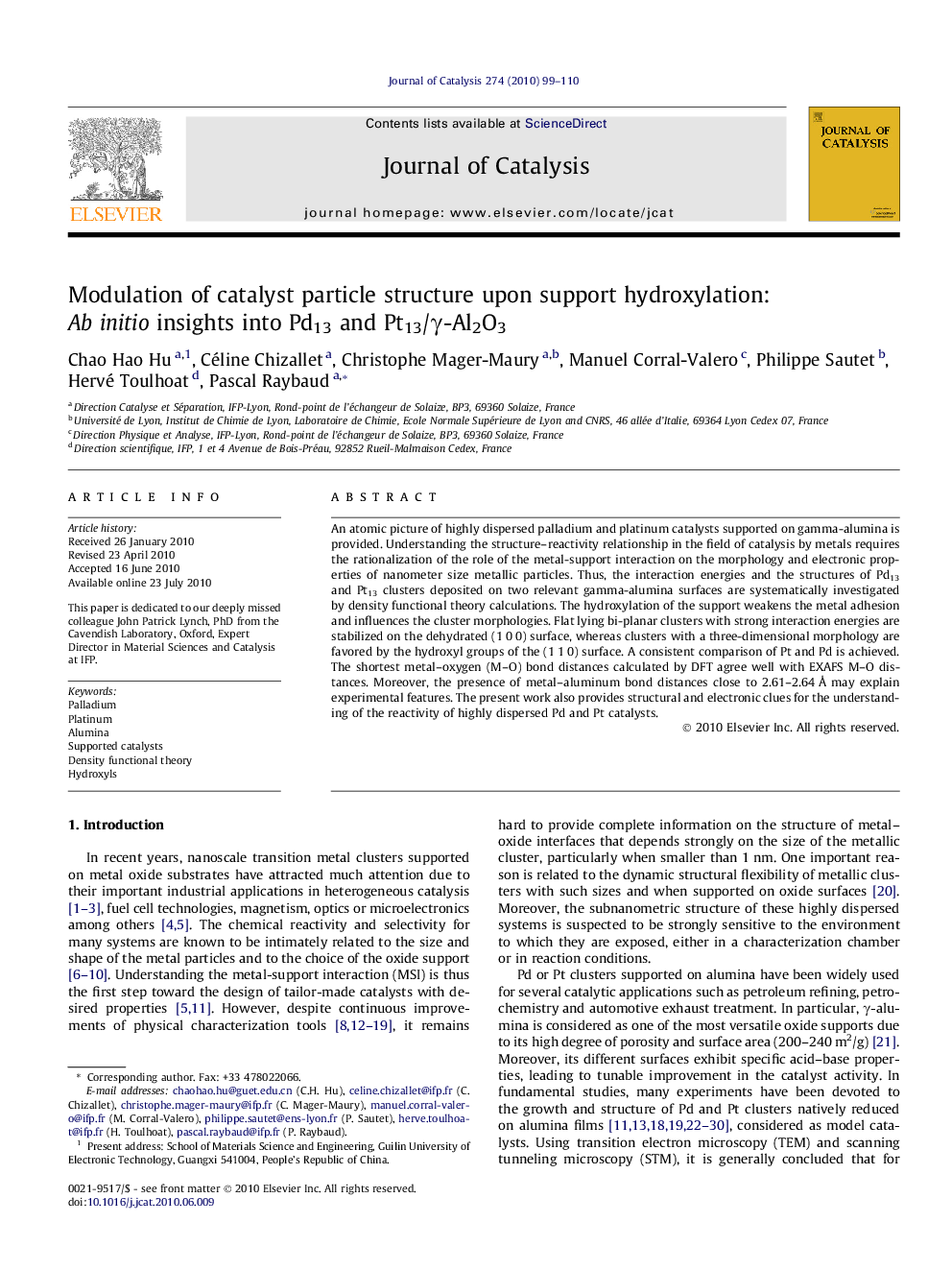| Article ID | Journal | Published Year | Pages | File Type |
|---|---|---|---|---|
| 61955 | Journal of Catalysis | 2010 | 12 Pages |
An atomic picture of highly dispersed palladium and platinum catalysts supported on gamma-alumina is provided. Understanding the structure–reactivity relationship in the field of catalysis by metals requires the rationalization of the role of the metal-support interaction on the morphology and electronic properties of nanometer size metallic particles. Thus, the interaction energies and the structures of Pd13 and Pt13 clusters deposited on two relevant gamma-alumina surfaces are systematically investigated by density functional theory calculations. The hydroxylation of the support weakens the metal adhesion and influences the cluster morphologies. Flat lying bi-planar clusters with strong interaction energies are stabilized on the dehydrated (1 0 0) surface, whereas clusters with a three-dimensional morphology are favored by the hydroxyl groups of the (1 1 0) surface. A consistent comparison of Pt and Pd is achieved. The shortest metal–oxygen (M–O) bond distances calculated by DFT agree well with EXAFS M–O distances. Moreover, the presence of metal–aluminum bond distances close to 2.61–2.64 Å may explain experimental features. The present work also provides structural and electronic clues for the understanding of the reactivity of highly dispersed Pd and Pt catalysts.
Graphical abstractAn atomic picture of nanometer size palladium and platinum particles supported on gamma-alumina is provided. It is found that the hydroxylation state of the support’s surface weakens the metal adhesion and influences the cluster morphologies.Figure optionsDownload full-size imageDownload high-quality image (254 K)Download as PowerPoint slide
